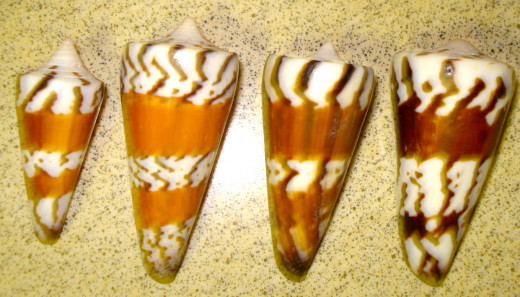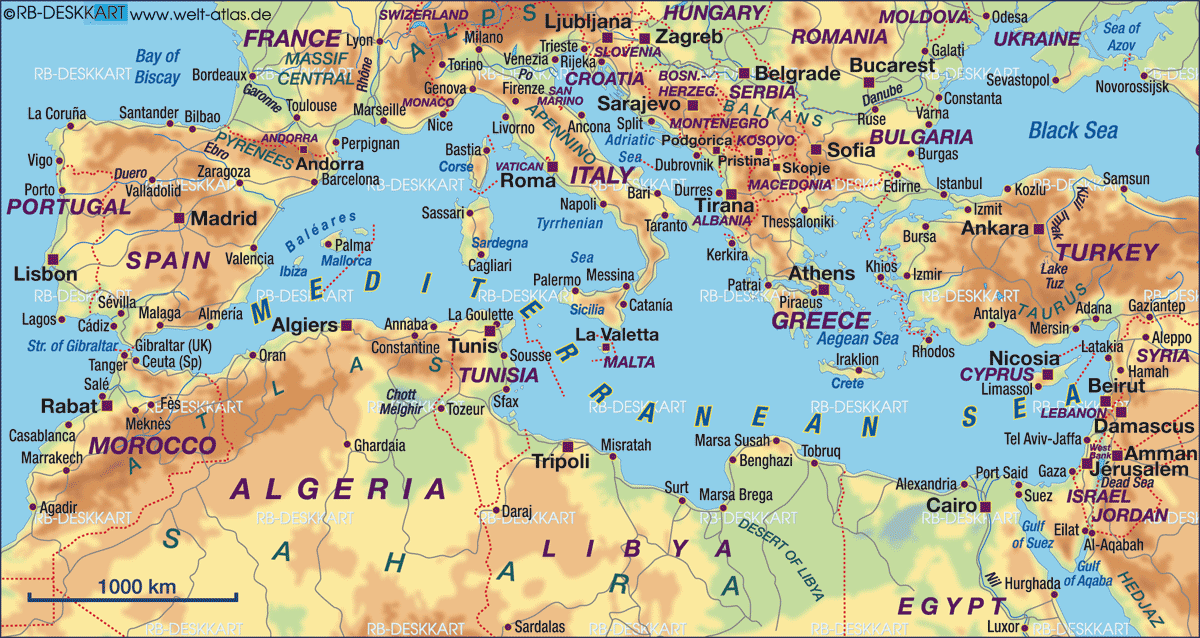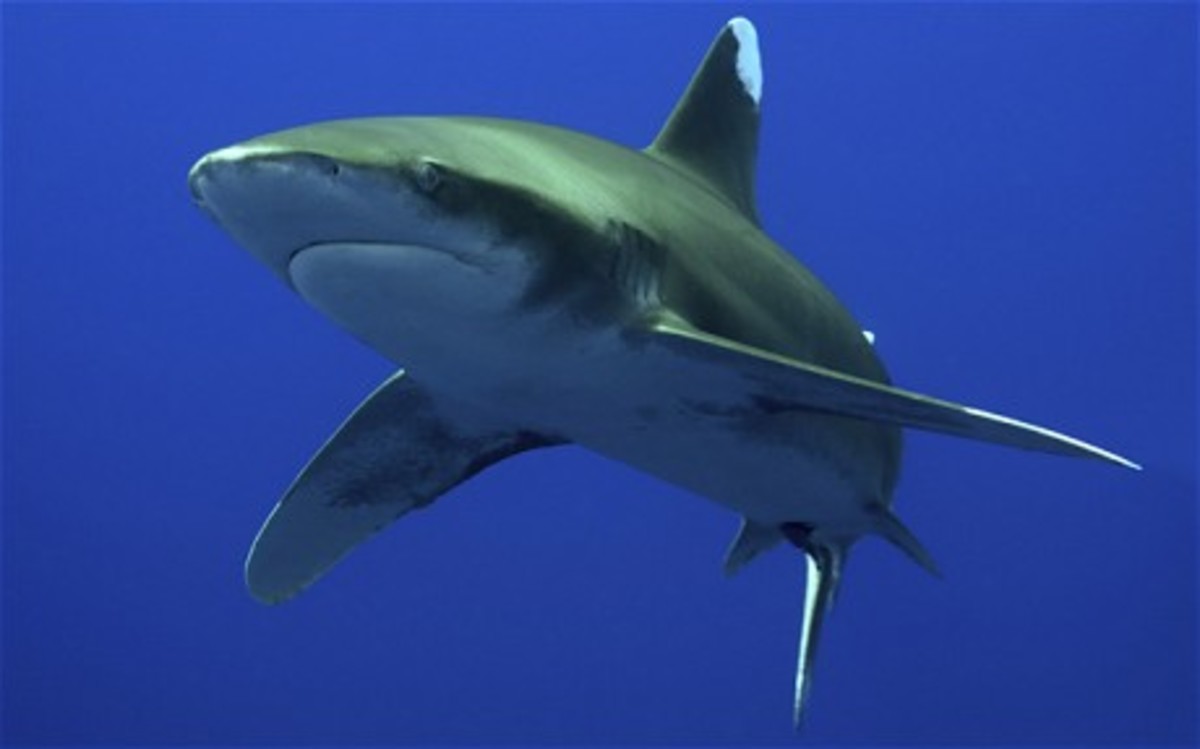- HubPages»
- Education and Science»
- Life Sciences»
- Marine Biology»
- Marine Life
Cone Sea Shells
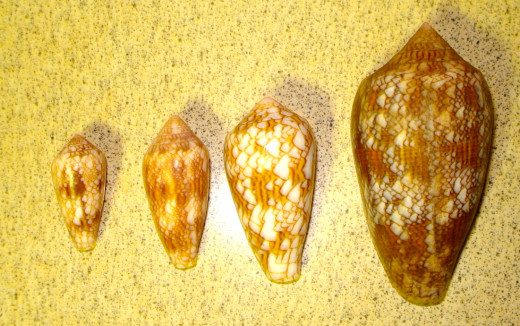
Conidae Sea Shells
Cone sea shells belong to the family of the marine snail family known as gastropods. They are the Conidae. There are over four hundred species of cone sea shells that are found in the warm, tropical waters of the Indo-Pacific and about fifty that are found in countries bordering the Atlantic.There is quite a variety that can be easily found so they are fun to collect.
Some Interesting Points About Cone Sea Shells
- An Ancient species: Cone sea shells are descended from an ancient type of seashell and over a hundred fossil species have been identified so far by paleontologists who specialise in conchology.
- Shape and Weight: Members of Conidae sea shells are comparatively heavy and usually have broad spires that are not very tall, in fact most of their spires are rather flattened and squat.
- Size: Most are around 3 - 4 inches long, but some, like the Prometheus Cone of West Africa will grow to 12 inches long. Others are minute like the Hebrew Cone which varies from only ½ to 1½ inches.
- Food: Cones feed on worms and small worms and are carnivorous.
- Habitat: Shallow water, coral reefs and under rocks.
- Reproduction: They lay eggs that are found in small, flat, leaf-like capsules, usually attached to the underside protrusions of rocks.
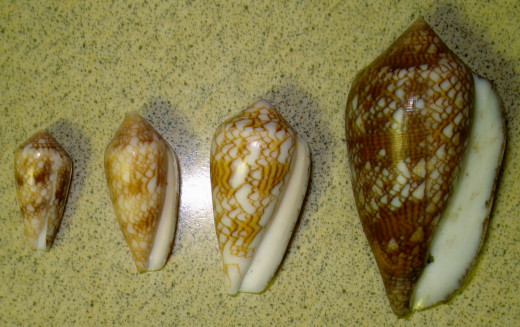
Textile Cones
Textile Cones, such as the Conus textile, grow to three or four inches long. They are attractive with tiny, often triangular markings rather like woven textile, hence their name.
Some in this group are larger, such as the Glory-of-the-seas (Conus gloria-maris Chemnitz) and the Geography Cone (Conus geographus Linné) which grow to five inches long. The textile pattern on the latter looks a little like a map, while the Glory-of-the-seas has a longer turret; it used to be very rare and was once the most valuable shell in the world. Both these are venomous.
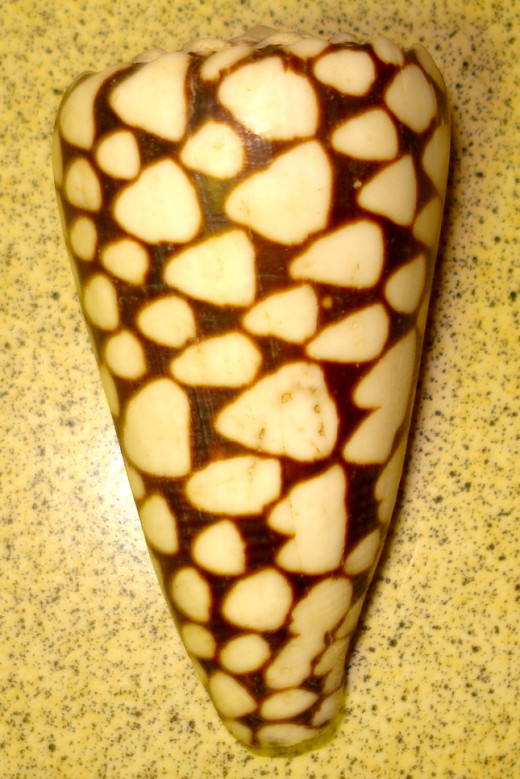
The Marble Cone
Marble Cones (Conus marmoreus Linné) are quite noticeable among other cones because of their bold, marble-like pattern. They grow to four inches and are common in the Indo-Pacific regions. While some types of Cones can come in an albino form, this one rarely does so.
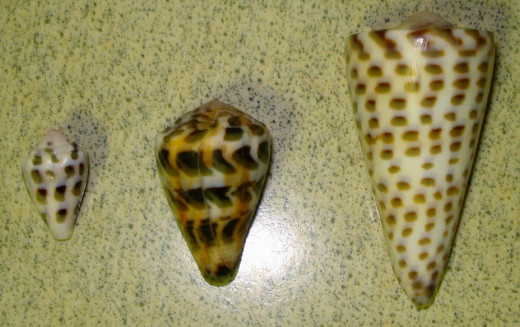
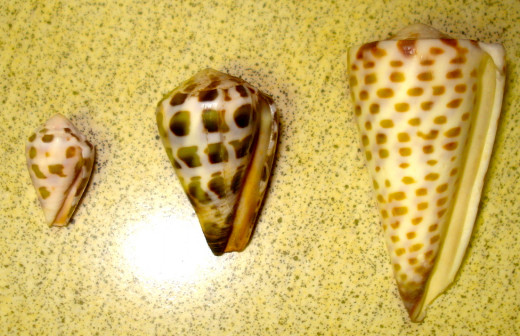
Hebrew and Pacific Lettered Cones
These, like the Marble Cone, are common Indo-Pacific Cones. They live in sand, hiding in it during the day and coming out at night to find their food, which is mostly marine worms.
- Hebrew Cones (Conus ebraeus Linné), so-called because they look a little like ancient Hebrew writing on scrolls, remain quite small. They usually only grow to a size of half an inch, the largest being one and a half inches.
- Pacific Lettered Cones (Conus litteratus Linné) on the other hand grow from three to five inches long. At first I thought this was the larger Leopard Cone as their pattern is similar, but the Leopard grows paler at the lower end, while the Pacific Lettered is darker.
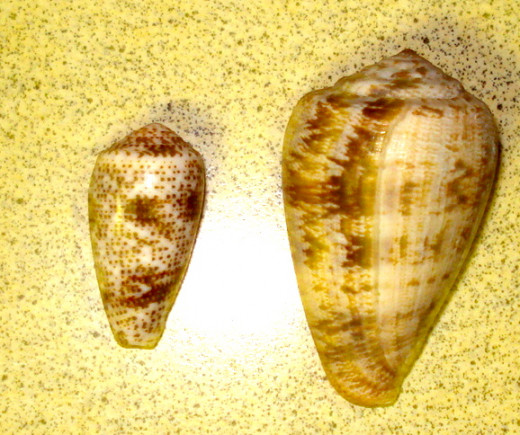
Eburneus and Bubble Cone
I am not really certain about the identification of these cones, but have put them here as 'possible.'
- Eburneus Cone (Conus eburneus Hwass) is another cone that is common to the Indo-Pacific areas. It grows to about two inches long and may be found in either a light or dark form.
- Bubble Cone (Conus bullatus Linné) is a textile cone that is found in the Western Pacific. It grows to two or three inches long and is not really common, so I may have identified it incorrectly.
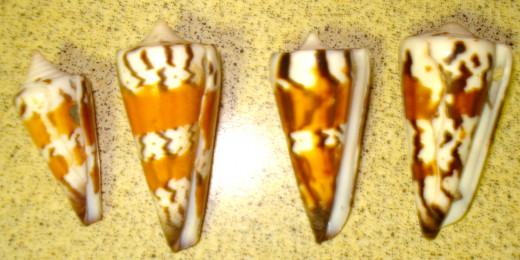
General Cones
General cones (Conus generalis Linné) are unusual and easy to identify. They are considered fairly rare, but as you can see I have found four. Their colours are variable, but they are all quite distinct. When fully grown they are usually about three inches long.
FINAL WARNING:
Cones from the Indian and Pacific Oceans have a harpoon-like stinger for incapacitating their prey and some of these, especially the Textile Cone and the Geography Cones are venomous and their sting can be fatal, even for humans. If there is any chance that the occupant of the shell is inside, DO NOT PICK IT UP!
